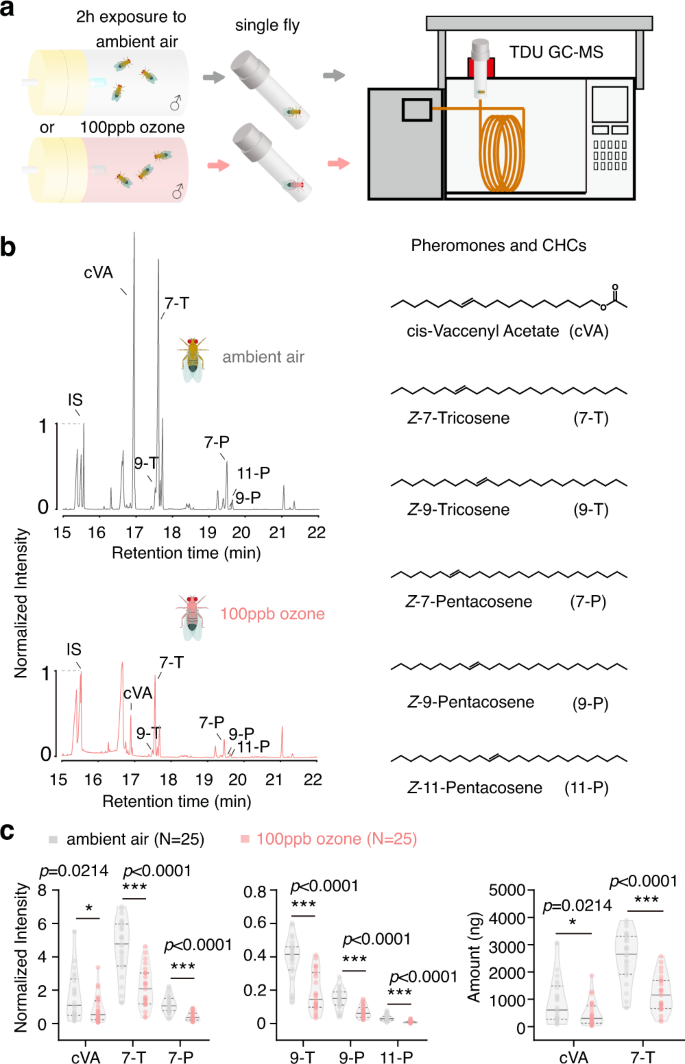高レベルのオゾンは昆虫の化学的交尾シグナルを破壊するため、世界的な昆虫の減少に寄与している可能性がある High levels of ozone destroy the chemical mating signal of the insects and may thus contribute to global insect decline
2023-03-14 マックス・プランク研究所
オゾンの酸化作用により、多くの昆虫フェロモンの分子内にある炭素-炭素二重結合が分解される。そのため、特定の化学的な交尾信号が機能不全に陥ってしまう。最も注目すべきは、性的コミュニケーションが阻害された結果、ハエのオスは、オゾン処理された同種のオスに対して異常な交尾行動を示すようになったことである。
<関連情報>
- https://www.mpg.de/19975894/0307-choe-air-pollution-impairs-successful-mating-of-flies-155371-x
- https://www.nature.com/articles/s41467-023-36534-9
オゾン暴露が昆虫の性的コミュニケーションを阻害する Ozone exposure disrupts insect sexual communication
Nan-Ji Jiang,Hetan Chang,Jerrit Weißflog,Franziska Eberl,Daniel Veit,Kerstin Weniger,Bill S. Hansson & Markus Knaden
Nature Communications Published:14 March 2023
DOI:https://doi.org/10.1038/s41467-023-36534-9

Abstract
Insect sexual communication often relies upon sex pheromones. Most insect pheromones, however, contain carbon-carbon double bonds and potentially degrade by oxidation. Here, we show that frequently reported increased levels of Anthropocenic ozone can oxidize all described male-specific pheromones of Drosophila melanogaster, resulting in reduced amounts of pheromones such as cis-Vaccenyl Acetate and (Z)-7-Tricosene. At the same time female acceptance of ozone-exposed males is significantly delayed. Interestingly, groups of ozone-exposed males also exhibit significantly increased levels of male-male courtship behaviour. When repeating similar experiments with nine other drosophilid species, we observe pheromone degradation and/or disrupted sex recognition in eight of them. Our data suggest that Anthropocenic levels of ozone can extensively oxidize double bonds in a variety of insect pheromones, thereby leading to deviations in sexual recognition.


